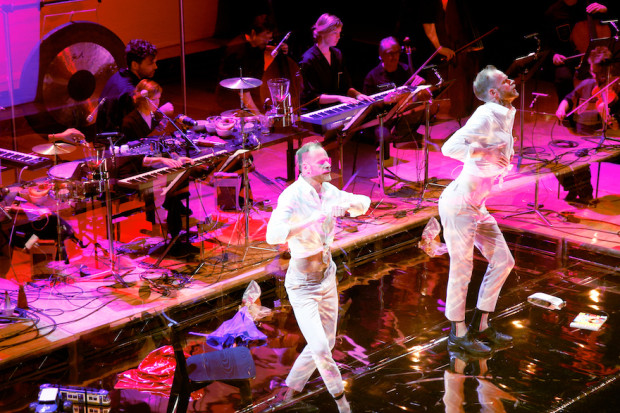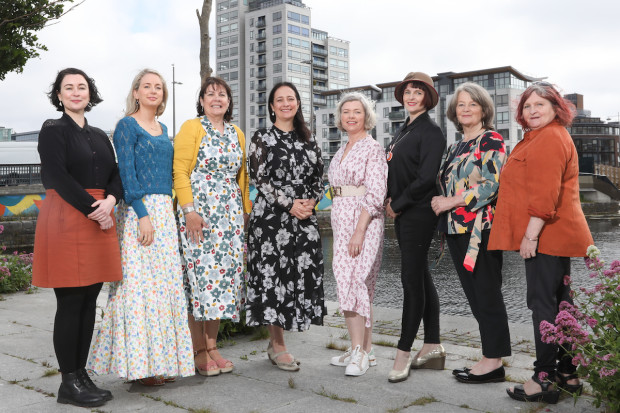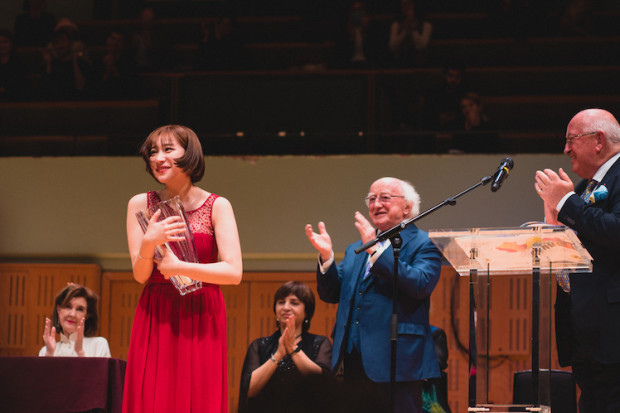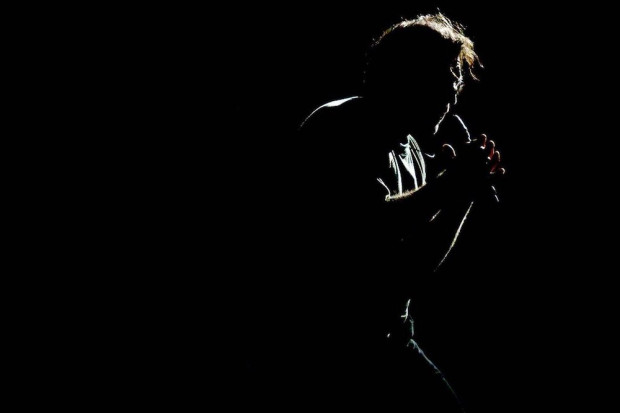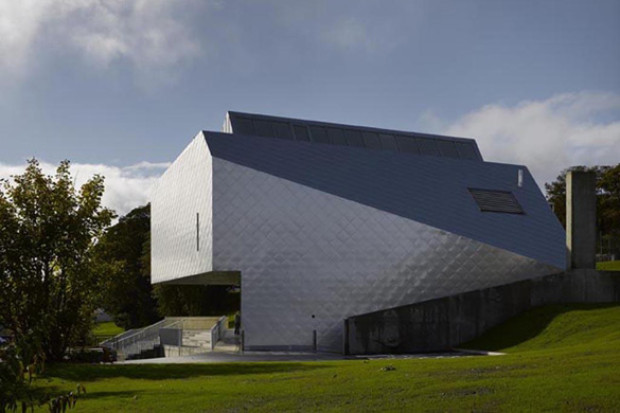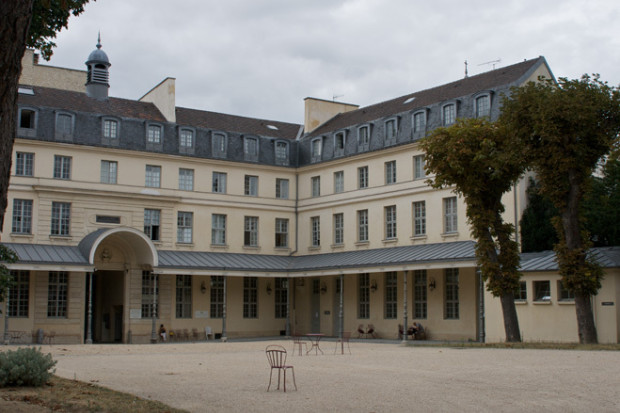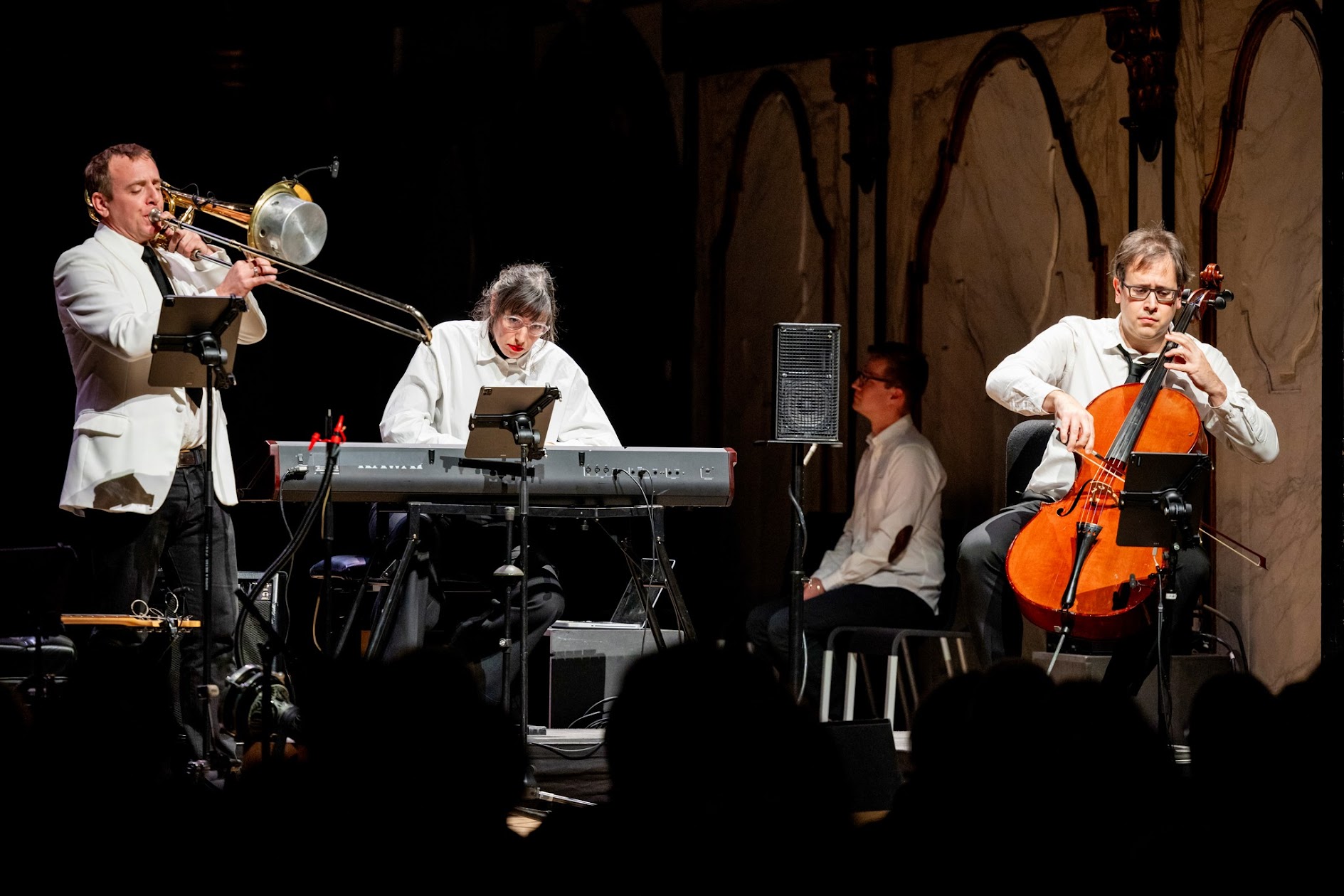
Nadar Ensemble
The Importance of Ensembles to the New Music Scene
For adventurous music lovers, April is that time of year when Dublin gets its annual double shot of contemporary music, courtesy of the two main new music festivals that take place in the city: Dublin Sound Lab’s Music Current, which took place last week (2–6 April), and New Music Dublin, which is coming up later this month. For this edition, Music Current returned to its five-day format of two years ago and the festival featured four ensembles from overseas along with Dublin Sound Lab’s own ensemble. Out of the twenty-six works, seven were world premieres while the remainder were Irish premieres, and the majority of composers were having their work performed in Ireland for the first time. It is this level of commitment to ‘the New’ that makes Music Current a unique fixture in the Ireland’s cultural calendar.
TAK Ensemble
The first concert featured the TAK Ensemble from the US, a group visiting Ireland for the first time and bringing an all-American programme that they have commissioned over the past ten years.
It opened with Erin Gee’s Mouthpiece 28 (2015), a piece that gripped the listener from the outset with the brightness of its sound. A sonic montage of extended techniques – sighing, scratching and whistling, it had a gentle rhythmic undercurrent to propel things along. The piece also took advantage of TAK’s virtuosity, to the point where it was sometimes unclear which instruments were playing what – a scratch or glissando sound that one would expect from the violin (Marina Kifferstein) frequently turned out to be by the vocalist (Charlotte Mundy). A number of sighing gestures hinted at a more emotive direction, but this didn’t come to fruition and the overall tone remained coolly detached.
More elemental forces were at play in Bethany Younge’s At midnight I walked into the middle of the desert (2019), which emerged from snippets of text submitted by the players themselves. Beginning with frantic air sounds from the flute (Laura Cocks) and bass clarinet (Madison Greenstone) it gradually came to a loud climax with some spectacular multiphonics. A brief respite of spoken text ushered in a more meditative passage and the final sections alternated between an otherworldly dreaminess and wild ferocity. A shamanic coda ended the piece with the performers rolling their heads in a trance-like state.
The concert’s first half concluded with excerpts from Jessie Cox’s Nothing is a Puff of Wind (2023), which started out promisingly with the ensemble contributing to an extended downward glissando that settled on momentary unisons before bursting into more frenetic passages. While this proved arresting, the sections that followed featured too much skittish playing in each instrument that achieved little in terms of blending and as such, had a quite random character. This direction climaxed with an ear-splitting jam of directionless lines between the flute and clarinet that proved more irritating than interesting. The concert’s second half began with Eric Wubbels’ INSTRUMENTS (2021), a piece punctuated by thunderous interjections of the bass clarinet with the sound modified by tin foil that covered the bell of the instrument. From the midpoint the vocal part doubled with the violin in an impressive display of dexterity against clangorous percussion (Ellery Trafford). A further vocal duet with the flute in the last section, against animated intrusions from the percussion and clarinet, brought this engaging piece to its conclusion.
The final work, Tyshawn Sorey’s For jaimie branch (2022), formed a stark contrast with the other items on the programme, being less concerned with extended techniques and more with an exploration of gently dissonant Feldmanesque sonorities. Particularly poignant was the non-vibrato vocal part in which Mundy’s voice floated above the texture and achieved exquisite blendings with the alto flute and violin that worked very effectively in the context of a memorial piece.
Dublin Sound Lab
The second night was given over to the Dublin Sound Lab’s own ensemble and the theme was the relationship between musical material and visual representation.
It began with a screening of Stan Brakhage’s silent film Glaze of Cathexis (1990) that displayed the director’s technique of hand painting directly on to film stock to create a rapidly changing sequence of abstract images. The film was accompanied by a new soundtrack by Irish composer John McLachlan titled Qualia I (2024). The unrelenting speed of the frames provided little in the way of strong contrast and McLachlan’s strategy entailed resorting to large sections of pointilistic textures, particularly in the clarinet (Paul Roe) and violin parts (Feilimidh Nunan), while the electronics and electric guitar (Shane Latimer) provided washes of bass tones and other trippy sonorities that wafted in periodically.
This was followed by an animated documentary by Eryk Salvaggio, Flowers Blooming Backward into Noise (2023), which discussed AI image generation with the obligatory warnings about distortions and racist stereotypes. The piece was accompanied by an ambient tape part over which the musicians, including Caitríona Frost on percussion, added improvisations. While the film’s narration by an AI-generated voice droned on endlessly, the highlight of the piece was an extended free jazz jam near the end with some particularly intense free jazz-style playing on the bass clarinet by Roe.
The second premiere on the night was João Pedro Oliveira’s for M (2024) for clarinet, violin, electronics and video. Much of the video part resembled an otherworldly journey through a landscape of undulating, digitally-generated surfaces while the accompanying live soundtrack alternated rapid, fragmentary passages and sustained tones that melted into each other and blended well with the electronic tape part.
Of the three premieres, the piece that made the strongest impression on me was Daniel McDermott’s Bezier Lines (2024). As the title suggests, the video part explored the concept of Bézier curves that are used in computer animations. Its gentle ambient soundtrack featured a simple violin melody that matched the undulating lines on the screen. While it may not have been the most complicated piece on the programme, it did achieve a real sense of blending between the instruments and the electronics to the extent that it was difficult at times to tell which sounds were live and which were coming through the speakers.
The pièce de résistance of the concert, however, was Alexander Schubert’s Sensate Focus (2024), a truly stunning integration of lighting, electronics and live performance. Schubert’s work was scheduled to have featured in the 2020 edition of Music Current that unfortunately had to be cancelled due to the pandemic. The work’s outstanding feature was the use of strobe lighting effects to spotlight the physical gestures of the players so that they resemble robots playing along to a post-apocalyptic rave. The music itself – with its references to rock, dance and electronic music – was genuinely catchy in its own right and accumulated an irresistible momentum over the course of the piece. The Dublin Sound Lab players gave a wonderful performance of this contemporary classic that demands the kind of physical synchronization usually reserved for contemporary dance ensembles.

Dublin Sound Lab ensemble
Black Page Orchestra
Thursday’s concert featured the Black Page Orchestra from Austria. Also on their first visit to Ireland, the group performed a varied programme that included three new works.
They opened with Mirela Ivicevic’s Dream Work (2018) – a soundtrack to Peter Tscherkassky’s film of the same name which uses found footage and darkroom editing techniques to create eerie film noir-style dream sequences. The piece’s industrial sound with effective writing for the electric guitar (Ruben Mattia Santorsa) blended well with the flickering, hallucinogenic atmosphere of the film.
The first of three premieres was Amanda Feery’s Hireth (2024) that was described as a ‘cybernetic lament-aria’ and featured a synthetic female voice singing lines of ambiguous text – ‘I have been searching’, ‘I feel you but I don’t see you’. The idea was an original one and the text fragments had a yearning quality that was intensified by the detached strangeness of the voice’s timbre. An accompaniment of slow moving harmonies and resonant metallic sounds from bowed electric guitar and percussion (Igor Gross) added to the haunting atmosphere.
The ensemble was slimmed down for group member Matthias Kranebitter’s own composition pitch study no.2 / the 88 piano keys (2022), which was performed by himself on keyboard and Alfredo Ovalles on piano. The work treated the keys of the piano as repositories of data whose sounding triggered obscure monologues on various (quasi)-scientific facts. While some of these discourses were amusing – such as a section on how often the note ‘a’ occurs in Beethoven’s piano sonatas – the exuberant randomness of the data did tend to drag as the piece approached the twenty-minute mark.
The second premiere was festival director Fergal’s Dowling’s Total Harmonic Distortion (2024), which featured the members of the ensemble playing unrelenting independent lines in a manner designed to extract maximum dissonance. Although the piece did achieve a certain hard, gritty sound, there was something a little monotonous about the constant counterpointing of jagged, atonal melodies over the same unwavering pulse. The piece was also quite loud within the context of a small venue such as the Project, making some of the dissonances in the higher register particularly hard on the ear.
The real distortion on the night, however, was reserved for Peter Ablinger’s The Absolute Absolute (The World Will Smile) (2024) in which the members of the ensemble downed tools in favour of microphones and frenzied feedback distortion in order to declaim a series of revolutionary-style slogans. These had a certain rhythmic poetry to them, but as with Dowling’s piece, the shoebox nature of the space meant that the piece was uncomfortably loud and the text difficult to hear clearly.
Like the TAK ensemble, the Black Page Orchestra ended their concert with a quiet piece that made for a welcome contrast. Vladimir Gorlinski’s The Reason (2014) never rose above mezzoforte throughout and featured an intermittent melodic part for tenor saxophone (Florian Fennes) with the other instruments fading in and out, adding snatches of material to produce an overall floating, improvisatory quality.
Nadar Ensemble
When it comes to presenting a concert of new work as a coherent ‘show’, few groups do this as well as the Nadar Ensemble from Belgium. After dazzling audiences at last year’s festival with a highly theatrical programme, their theme this year was light and darkness.
It opened with Simon Steen-Andersen’ Schlummert Ein (2013) for cello, trombone, and keyboard, which used the Bach aria of the same name and was progressively distorted into a blur while the lighting dimmed. While this piece worked well in the context of the ‘light to darkness’ theme, the concept was a little thin and the trajectory of the piece was clear from the outset.
With the venue in darkness, the audience suddenly found themselves encircled by fifteen or so bodies who emerged out of the audience to begin Serge Verstockt’s DRIE (2007). This piece seemed to buck the general trend in the festival by being noticeably low-tech at its outset, using volunteer performers with matchboxes and other hand percussion to create sounds that recalled the nocturnal sounds of nature. The spatial direction and changes were controlled by a conductor who signalled each change with the lighting of a match, adding a further ritualistic dimension. While technology seemed conspicuous by its absence, the piece ended with two soloists on stage shaking matchboxes. The sound was projected spatially around the audience producing an effect uncannily similar to the previous performers, leaving one to question who exactly was producing what sounds.
Technology was very much a feature of Thierry De Mey’s Light Music (2004, rev. 2021) for conductor and technician that utilised wifi sensors to ‘paint light and sound’. The Nadar Ensemble’s trombonist Thomas Moore assumed the role of a conductor, standing in relative darkness with a beam of light crossing the stage in front of him. When Moore moved his hands into the path of the beam they gave the impression of being independent of his body, flame-like and dancing in sync with sounds from an accompanying tape track. Later in the piece, these movements were visualised on the screen to paint the sound into a series of abstract images. The performance was a tour de force of concentration and accuracy from Moore and again demonstrated the effective integration of music and technology.
lovemusic collective
The final concert of the festival featured the lovemusic collective from France who performed a programme of works connected by the theme of ‘otherness’.
It opened with a world premiere – Lara Gallagher’s installation Leap of Foals (2024), which aimed ‘to harness and interrogate the condition of sound and the processes by which it operates in bodies of water’. To this end, the setup involved two digital Arduino instruments in bowls of water at either side of the stage into which the performers dipped their hands. The piece then explored various extended techniques drenched in reverb that gave the gentlest tap on the flute or string harmonic an epic, ethereal quality. While perhaps a bit too dependent on reverb, one could imagine how well this piece would work as an installation in a more resonant space.
Finbar Hosie’s The Hyacinth Garden (2023) was based on T.S. Eliot’s The Waste Land and was described in the programme as ‘a political and sensuous exploration through wastelands and gardens’. It started off with nocturnal sounds and footsteps before launching into more abrasive textures of non-pitched sounds and guitar distortion. Those familiar with Eliot’s poem would have picked up on certain references, but, on the whole, the piece remained as elliptical as the poem itself.
Ann Cleare’s eyam iii (if it’s living somewhere outside of you) (2015) was for bass flute soloist (Emiliano Gavito), although it was flanked on either side by two ‘shadowing’ instruments – bass clarinet (Adam Starkie) and cello (Lola Malique) – that were partially concealed behind curtains. The bass flute would play animated, lengthy solos – featuring harmonics and singing sounds – until one of the two shadowing instruments entered inducing a moment of stillness by forming a unison with the soloist. This seemed to promise some dialectical element but it never came to pass and the work remained essentially a bass flute solo that had well exhausted its material by the end of its fifteen-minute duration.
Icelandic composer Bára Gísladóttir’s Rage against reply guy (2021) was an expression of the artist’s ‘rage’ against online trolling, particular on the part of men who make insulting remarks about women. It all began rather peacefully with a unison on violin (Emily Yabe) and cello that was suddenly disrupted by electric guitar (Christian Lozano Sedano) distortion initiating another drone a tone lower. The textures became more violent with distorted playing on bass clarinet and electric guitar. The initial union returned before the finish but it was once again dislodged in a battle that seemed to have some symbolic resonances with the ideas behind the piece.
For me, the standout piece of the concert was Sasha Blondeau’s Autres inappropriées (2024) – the first piece in a planned cycle titled ‘Becoming mutants’ that aims to explore ‘notions of hybridisation, monstrosity and marginality’ in the context of groups that lie outside the broad categories constructed by Western society. Such notions may have been difficult to locate in the music itself, which stood out more for its beautiful shimmering textures and spacey electronic part (Finbar Hosie) than abstract conceptual musings.
In a concert that leaned heavily towards conceptual ideas, pride of place in this direction went to the final piece, Neil Luck’s Deepy Kaye (2018), which explored the genre of fan fiction. The piece relayed a series of made-up anecdotes about the cult film actor David Patrick Kelly that were delivered by the group’s versatile flautist Emiliano Gavito. These recalled humorous incidents in the course of the actor’s professional life and made frequent jump-cut transitions from one to the next, provoking a few chuckles amongst the audience.
The main arbiters of taste
As with last year’s festival, grappling with the post-digital composition landscape emerged as a prominent theme, but the concerts this year were more defined by the programme style of each ensemble than any overarching theme. What all of this goes to show is just how far Music Current is ahead of the competition when grasping the essential point that these days it is the new music ensembles themselves – both in their instrumentation and curatorial aesthetic – who are the main arbiters of taste on the new music scene. This makes the lack of international ensembles featured in the upcoming New Music Dublin concerning, with the same homegrown ensembles predominating year after year. That Music Current can boast such a strong representation from Europe and the US while still fulfilling its obligations to showcase recent Irish work should give us some pause for thought.
Is there room for improvements? Certainly. While audience numbers were healthy – the Thursday and Saturday gigs in the Project’s smaller Cube space seemed pretty much sold out to me – a performance of a work like Schubert’s Sensate Focus or De Mey’s Light Music in the main space upstairs should surely be packed to the rafters.
Nevertheless, as it approaches its ten-year anniversary, Music Current looks in good shape and festival director Fergal Dowling’s guiding vision of bringing the most cutting-edge work to Dublin audiences through inviting the most trailblazing ensembles from abroad seems to be a winning formula.
Visit www.musiccurrent.ie.
Subscribe to our newsletter.
Published on 11 April 2024
Adrian Smith is Lecturer in Musicology at TU Dublin Conservatoire.










